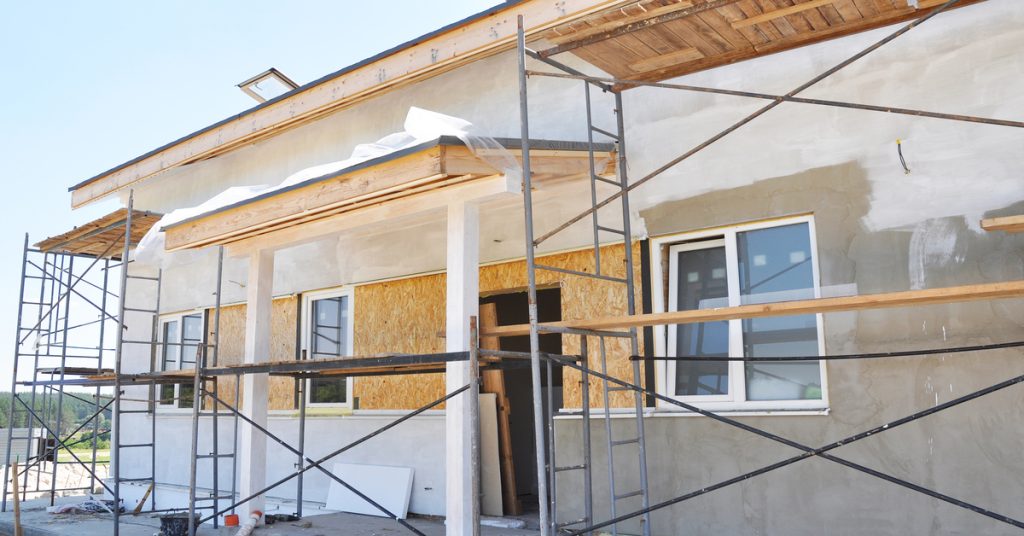

If you do not ensure your home insulation is to a high standard, you invite many problems to your household, both in the cold and hot weather that we expect in Australia. Some examples include:
- Lower heat flow around the house.
- Heat loss through gaps in home insulation.
- A less energy-efficient home.
- Higher payments for heating bills
To prevent these risks that come with poor home insulation, you need to know some excellent ways to improve your home insulation. Continue reading for nine of the best home insulation methods.
What Are the Best Ways to Improve Home Insulation?
Improving your home insulation is essential in a hot or cold climate. First, however, you may need to learn ways to improve home insulation, including home insulation materials and methods.
Here are nine methods to help you improve your home insulation.
1: Include Ceiling Insulation to Keep Heating and Cooling Costs Low
Because heat can escape through the roof (the roof cavity, for example) more quickly than other parts of the house, it’s crucial to include ceiling insulation and roof insulation.

You can include reflective ceiling insulation because it traps heat easier and results in lower heat and energy bills.
However, if you have no ceiling (similar to a cathedral roof), you need bulk insulation to improve your roof insulation and increase heat gain in the house (a typical cathedral roof will also include foil reflective insulation to improve heat gain).
Rapidridge is our dry fixed roofing and ventilation system; it includes excellent cooling systems and significantly lowers your energy bill.
2: Include Solid Wall Insulation to Improve the Heat Flow in the House
Wall insulation for your internal walls (and external walls) will reduce heat loss for your house.
For example, you need tight home insulation around wall cavities to ensure that there are no gaps. Therefore, you should use foam board or spray for a wall cavity to ensure you do not lose heat.
Also, you should find a home insulation installer who specialises in your wall type (brick veneer walls, for example).

3: Insulate Radiators and Heat Sources to Improve Energy Efficiency
Radiant heat can drastically increase your heating costs and energy bills if you do not insulate your radiator, pipes and boiler.
Additionally, home insulation solutions for pipes and heaters are usually cost-effective (a cylinder jacket for pipes, for example).
4: Use Heavy-duty Insulation Like Structural Insulated Panels
Bulk insulation for the home is essential to prevent heat loss and keep energy bills low.
Unless you need a specific type of home insulation, you should install bulk insulation because it is the most effective at trapping heat.
5: Use a Door Snake to Prevent Air Leakage
Reducing air leakage is essential if you want to improve heat gain during cold weather and for keeping cold air in during hot weather.
One of the most common examples of air leakage is through the gaps around the door. To prevent this, you can use a door snake (an easy and cost-effective home insulation solution) and place it on the floor directly below the door.
6: Install Underfloor Insulation to Prevent Heat Loss
Floor insulation is just as crucial as ceiling insulation because it can prevent heat loss in the home. Additionally, floor insulation (bulk underfloor insulation, specifically) can keep your house cool during hot weather.

Because of the space needed for underfloor insulation, you need a cost-effective bulk insulation solution to fill the space effectively and reduce energy bills; expanded polystyrene sheets are a great home insulation solution because they are easy for installers and they insulate a house effectively.
7: Consider Reflective Insulation to Improve Home Temperature in Summer and Winter
Reflective insulation keeps a house cool in the summer, making it a fantastic home insulation solution in Australia; reflective insulation does this by blocking out radiant heat.
Reflective insulation is also beneficial for cold weather because it uses reflective surfaces to keep heat inside the house (reflective foil insulation is brilliant for this).
8: Insulate Around Windows to Stop Air From Entering the House in the Winter
As well as doors, windows can often be a primary culprit for letting hot or cold air into a house. Therefore, you should mention window home insulation when you hire a professional to install insulation.
You can use weather strips or foam tape to insulate windows effectively.

9: Use Heavier Curtains to Trap More Air
If you do not have insulation for your windows (due to the cost being too high, for example), you can replace your curtains with heavier ones because they can trap more air than thinner ones.
Thin curtains will quickly move out of the way of air entering the house, but thick curtains trap it and ultimately lower your energy bills.
A Final Summary on how to Insulate Your Home
The primary advice we can give so you can insulate your home correctly is to ensure that you insulate every part of the house and leave no gaps. However, if you cannot afford to insulate every part, focus on the areas with the largest surface area, such as roof insulation or wall insulation.
Finally, you can purchase products to insulate smaller parts of the house yourself, like foam tape for windows; this can help you to insulate your home while not overspending.
